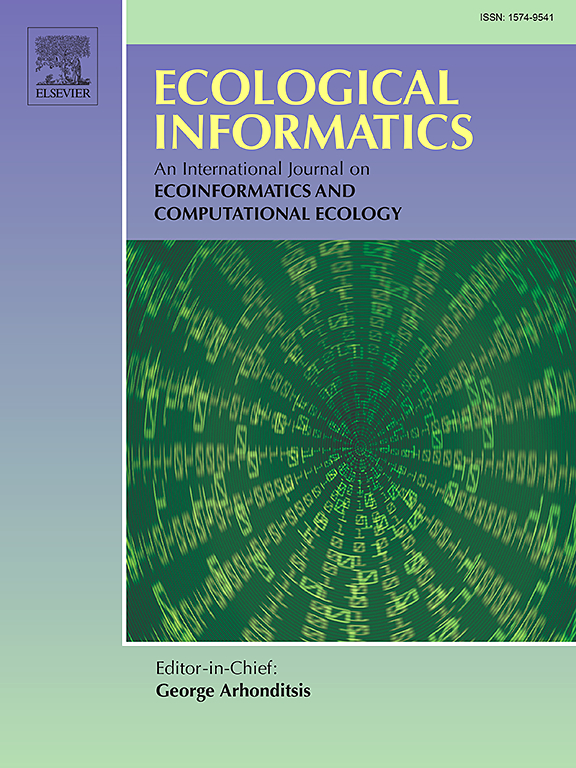Grassland management and phenology affect trait retrieval accuracy from remote sensing observations
IF 5.8
2区 环境科学与生态学
Q1 ECOLOGY
引用次数: 0
Abstract
Grasslands, the most widespread terrestrial biome, are subject to various management practices that influence their biodiversity and ecological functions. Remote sensing offers a promising tool for monitoring these impacts, but challenges persist in heterogeneous grassland systems. This study combines radiative transfer model (RTM) and machine learning algorithms to assess the efficacy of the model inversion in predicting plant functional traits under different grassland management regimes. The model was applied to intensively and extensively managed grasslands using field-collected hyperspectral data. Results show that while RTM inversion effectively predicts traits such as leaf area index (LAI) and pigment concentrations in homogeneous, intensively managed systems, its accuracy diminishes in diverse, extensively managed grasslands, particularly for traits like leaf mass per area (LMA) and pigment content. These limitations stem from the model’s assumption of homogeneous canopy scattering, which fails to account for the heterogeneity in mixed green and brown vegetation, especially at senescence. Despite these challenges, the study highlights the potential of hyperspectral remote sensing to capture grassland management based on a solely empirical approach. Future research should focus on refining models to better account for canopy heterogeneity and integrating in-situ data to improve trait prediction in complex ecosystems.
草原是分布最广的陆地生物群落,各种管理措施都会影响其生物多样性和生态功能。遥感技术为监测这些影响提供了一种前景广阔的工具,但在异质性草原系统中仍存在挑战。本研究结合辐射传递模型(RTM)和机器学习算法,评估了模型反演在预测不同草地管理制度下植物功能特征方面的功效。利用实地采集的高光谱数据,将该模型应用于密集管理和广泛管理的草地。结果表明,虽然 RTM 反演能有效预测同质、集约化管理系统中的叶面积指数(LAI)和色素浓度等性状,但在多样化、广泛管理的草地上,其准确性会降低,尤其是单位面积叶片质量(LMA)和色素含量等性状。这些局限性源于该模型假定树冠散射均匀,而这一假定未能考虑绿色和棕色混合植被的异质性,尤其是在衰老期。尽管存在这些挑战,但这项研究强调了高光谱遥感在完全基于经验的方法捕捉草原管理方面的潜力。未来的研究应侧重于完善模型,以更好地考虑冠层的异质性,并整合原位数据,改进复杂生态系统的性状预测。
本文章由计算机程序翻译,如有差异,请以英文原文为准。
求助全文
约1分钟内获得全文
求助全文
来源期刊

Ecological Informatics
环境科学-生态学
CiteScore
8.30
自引率
11.80%
发文量
346
审稿时长
46 days
期刊介绍:
The journal Ecological Informatics is devoted to the publication of high quality, peer-reviewed articles on all aspects of computational ecology, data science and biogeography. The scope of the journal takes into account the data-intensive nature of ecology, the growing capacity of information technology to access, harness and leverage complex data as well as the critical need for informing sustainable management in view of global environmental and climate change.
The nature of the journal is interdisciplinary at the crossover between ecology and informatics. It focuses on novel concepts and techniques for image- and genome-based monitoring and interpretation, sensor- and multimedia-based data acquisition, internet-based data archiving and sharing, data assimilation, modelling and prediction of ecological data.
 求助内容:
求助内容: 应助结果提醒方式:
应助结果提醒方式:


